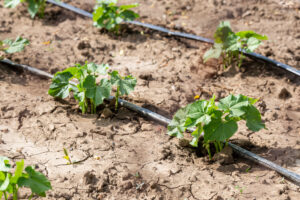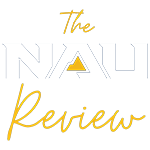In a surprising turn of events, researchers have faced an unprecedented challenge: the removal of vital public health data by the federal government. This move has left scientists like Tom McAndrew grappling with uncertainty about the future of flu forecasting and public health preparedness in the U.S.
“Knowing these sorts of things can happen makes me anxious about what could potentially happen in the future in the U.S.,” McAndrew shared, reflecting on the significance of the situation. The incident, although partly rectified with some data being reinstated, has prompted a broader discussion on how to better prepare for similar occurrences.
What’s in a Flu Forecast?
Flu forecasts, essential tools for public health officials, rely heavily on government data. These forecasts are crucial for predicting peak transmission times, estimating case numbers, and determining hospitalization needs. They also help evaluate the effectiveness of preventative measures, guiding decisions about vaccine clinics and hospital alerts.
McAndrew and Garrik Hoyt, a doctoral student, highlighted these concerns in their paper, “When Data Disappear: Public Health Pays As U.S. Policy Strays.” Published in The Lancet, the study argues that limiting access to public health data undermines the ability to forecast flu-related hospitalizations and poses broader risks to public health during crises.
Currently, there are no mandatory statutes for collecting or reporting key epidemiological data. McAndrew and Hoyt began their research in February, analyzing stats from the start of the 2023-2024 influenza season. Their paper was published on May 21, 2025.
“I think the biggest reason people should care about this is that the datasets that were produced by the government allow transparent analysis to be conducted, and transparency tends to lead to better decisions,” McAndrew explained, emphasizing the importance of open and accessible datasets for public health decision-making.
The Data-Rich Model Versus The Data-Poor Model
The study by McAndrew and Hoyt analyzed statistics from seven U.S. government sources related to seasonal influenza, creating two models: a data-rich model and a data-poor model. The data-rich model, incorporating all sources, produced reliable forecasts beneficial for public health decisions. In contrast, the data-poor model, relying on minimal information, yielded uncertain predictions, highlighting the necessity of comprehensive data surveillance.
The report warns of severe consequences if public health data collection ceases, noting that an average flu season results in 400,000 hospitalizations and 20,000 deaths in the U.S., with direct medical costs reaching approximately $10 billion.
This issue arises amidst an outbreak of avian flu, also known as H5N1, which primarily affects birds but can infect humans and animals. “H5N1 is no joke. If the current administration is restricting or pausing the dissemination of data related to that, then officials at the state level won’t be able to prepare or react,” McAndrew cautioned about the potential global implications.
Protecting the Data
McAndrew advocates for expanding efforts to ensure local control over government-hosted datasets, involving academia, industry, and local governments. While costs might be marginal, the challenge lies in supporting and coordinating data collection processes.
“We advocate for a strategic national plan, informed by diverse stakeholders, including those who generate, store, use and maintain public health data and are involved in data infrastructure,” the report states, emphasizing the need for a collaborative approach involving private industry and academia.
Lehigh’s associate vice provost for research, Dominic Packer, highlighted the broader implications: “The United States government has been so fundamentally important in collecting and making available vast amounts of data that impact any number of things, whether it’s health, the economy, education, how well students are doing in school.” He noted that federal agencies are pulling back due to staffing and funding challenges, affecting researchers and institutions like Lehigh.
When data began disappearing from federal websites, Lehigh researchers, particularly from the College of Health, quickly archived what they could. “There are a lot of opinion pieces out there currently about how various actions by the executive branch will affect research, the economy and society in different ways. What I like about Tom’s article is that it goes beyond opinion to show empirically, by analyzing data, what the effects are likely to be,” Packer commented, underscoring the value of rigorous research.
The Human Aspect of Research
Hoyt is preparing a follow-up paper focusing on the effects of reducing public health official numbers. Since January, thousands of federal employees from the Department of Health and Human Services have been terminated, with only a small fraction of CDC employees reinstated, according to news reports.
“We want to show the value of having expert opinion and emphasize the danger of reducing the amount of expertise,” Hoyt explained. His follow-up paper examines the impact of fewer expert opinions on flu season modeling, highlighting the risk of bias when diverse perspectives are lost.
Hoyt’s personal connection to flu forecasting stems from his father’s vulnerability due to genetic diabetes. He aspires to become a professor, inspiring others to pursue data science. “I like that this work has a real-world application. I can very easily think of people I know who have had really bad flu. We live in a community with a lot of elderly people and those who have chronic health conditions. Flu is a much larger threat to them than to someone my age,” Hoyt shared, appreciating the human impact of his research.
Lehigh has been named an R1 research university by the Carnegie Classification of Institutions of Higher Education. Universities with this designation conduct the highest level of research activity within the Carnegie Classification. Lehigh is the only university in the Lehigh Valley to have this designation, and one of seven in Pennsylvania. Learn more.
Read More Here










Be First to Comment